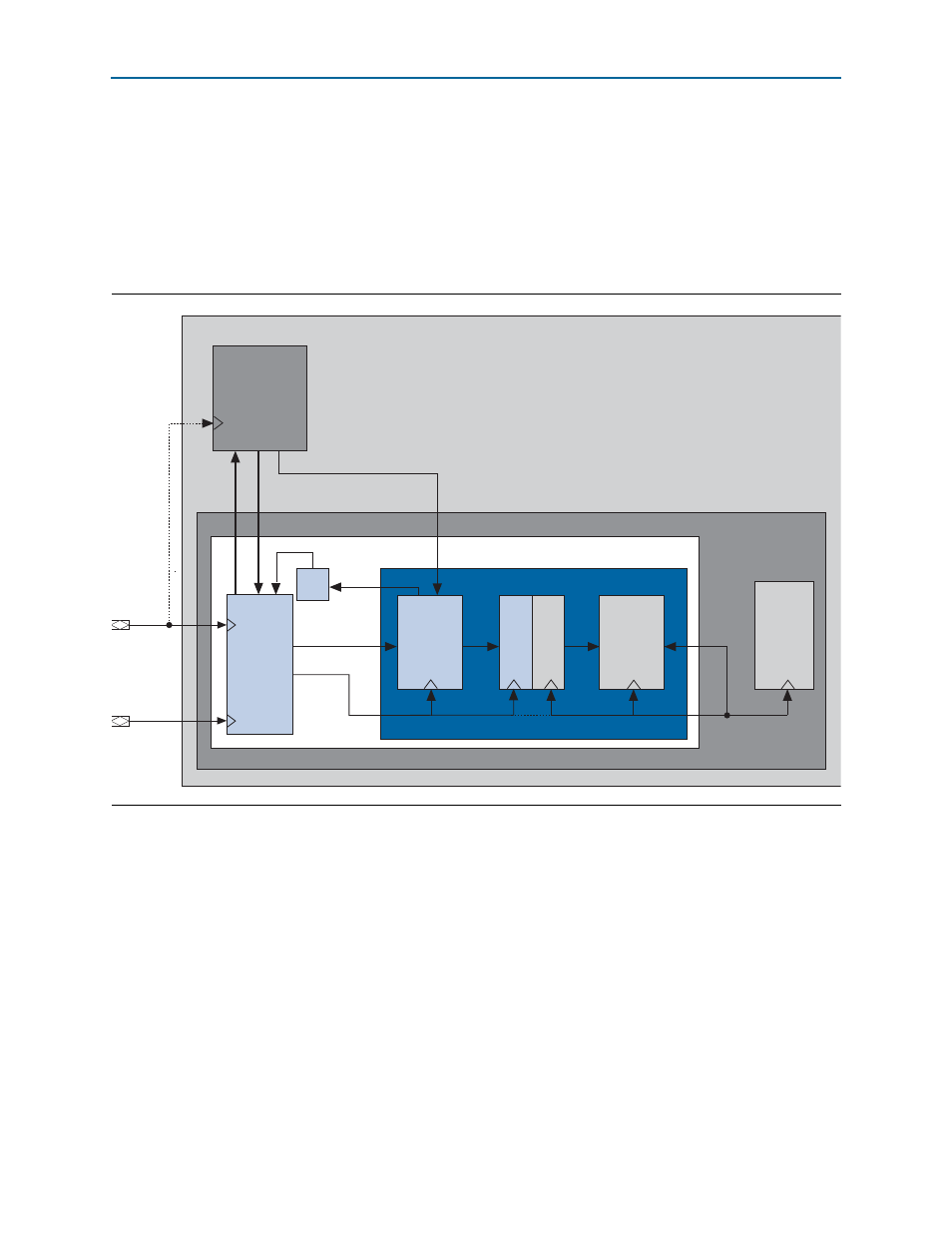Pclk, Pclk –5, Illus – Altera Arria V Hard IP for PCI Express User Manual
Page 185

Chapter 9: Reset and Clocks
9–5
Clocks
December 2013
Altera Corporation
Arria V Hard IP for PCI Express
User Guide
The Hard IP contains a clock domain crossing (CDC) synchronizer at the interface
between the PHY/MAC and the DLL layers which allows the Data Link and
Transaction Layers to run at frequencies independent of the PHY/MAC and provides
more flexibility for the user clock interface. Depending on system requirements, you
can use this additional flexibility to enhance performance by running at a higher
frequency for latency optimization or at a lower frequency to save power.
illustrates the clock domains.
indicates, there are three clock domains:
■
■
■
pclk
The transceiver derives
pclk
from the 100 MHz
refclk
signal that you must provide
to the
equires that the
refclk
signal
frequency be 100 MHz
±
300 PPM; however, as a convenience, you can also use a
reference clock that is 125 MHz
±
300 PPM.
Figure 9–5. Arria V Hard IP for PCI Express Clock Domains
100 MHz
(or 125 MHz)
100 MHz
(or 125 MHz)
Required for CvP
Hard IP for PCI Express
PHY/MAC
Clock
Domain
Crossing
(CDC)
Data Link
and
Transaction
Layers
125 or 250 MHz
pclk
refclk
reconfig_clk
data
PHY IP
Core for
PCIe
top_serdes.v
altpcie_a5_hwtcl.v
top.v
top_hw.v
(coreclkout is derived from p_clk)
reconfig_fromxcvr[
<n>
-1:0] reconfig_toxcvr[
<n>
-1:0]
reconfig_busy
rs_serdes
mgmt_clk_clk
coreclkout_hip
(62.5 or 125 MHz)
coreclkout
Application
Layer
Transceiver
Reconfiguration
Controller
pld_clk
(TX/RX
PCS/PMA)
Reset